Most bodybuilding back workout routines include an abundance of lat pulldown and pull-up exercises. This is good news because these vertical pulling exercises build upper back width. In fact, if you want a classic torso V-taper, pull-ups and pulldowns are all but compulsory.
However, if you want a back that wide and thick, you need more than vertical pulls. You need to include horizontal pulling exercises in your workouts, too. These hit your middle back, which can improve your back thickness and girth.
A strong middle back improves your physique aesthetics, strength, and posture. As a veteran personal trainer with over 35 years in the industry, I can attest that the best back workouts usually include as many horizontal pulling exercises as they do vertical.
In this article, I reveal the 10 best exercises for building up this critical muscle group.
Recent Updates: On June 1, 2024, Fitness Volt’s Senior Editor, Vidur Saini (American Council on Exercise-CPT), revised the exercise list and added actionable expert tips throughout the piece to improve the reader experience. Level Up Your Fitness: Join our 💪 strong community in Fitness Volt Newsletter. Get daily inspiration, expert-backed workouts, nutrition tips, the latest in strength sports, and the support you need to reach your goals. Subscribe for free!
10 Best Middle Back Exercises
These are the 10 best exercises for your mid-traps and rhomboids:
- Bent-over barbell row
- Seal row
- Seated chest-supported cable row
- Pendlay row
- Horizontal row
- Renegade row
- Dumbbell rear delt row
- Band pull-aparts
- Face pulls
- Reverse pec deck fly
1. Bent-over barbell row
| Sets & Reps | Equipment Needed | Target Muscles |
| 4 x 6-8 (strength) or 3 x 10-12 (hypertrophy) | Barbell | Lats, rhomboids, traps, rear delts, biceps, erector spinae |
Done with good form and not too much weight, the bent-over barbell row is an excellent middle-back exercise and can be performed safely by most people.
“Initiate the pull by retracting your shoulder blades before bending your elbows to maximize mid-back engagement,” says Saini.
Steps:
- Grip and hold a barbell with an overhand, wider-than-shoulder-width grip. Brace your core and bend your knees slightly.
- Hinge forward from the hips and lean over until your upper body is almost parallel to the floor. Let your arms hang straight down from your shoulders.
- Without using your legs or back, bend your arms and row the bar up and into your chest. Pull your shoulders back and keep your elbows level with your shoulders.
- Extend your arms and repeat.
Barbell Bent Over Row
Benefits:
- An excellent total back builder.
- A very accessible exercise — all you need is a barbell and weights.
- Small changes to the angle of your back will change the feel and effect of this exercise.
Coach Tips:
- Keep your lower back arched throughout to protect your spine and maximize middle back engagement.
- Lead with your elbows and pull the bar to your chest to emphasize the mid-traps and rhomboids.
- Keep your wrists straight throughout.
| Difficulty | Progression | Regression |
| Intermediate | Pendlay row | Chest-supported row |
2. Seal row
| Sets & Reps | Equipment Needed | Target Muscles |
| 3 x 10-15 | Barbell, weight bench, aerobic steppers | Lats, rhomboids, traps, rear delts, biceps |
If bent-over rows bother your lower back, or you prefer to work your upper body in isolation from your legs, then seal row is the exercise for you. You’ll need a tall bench for this mid-back builder, but in return, you’ll be able to push your mid-back to the limit without having to worry about your lower back at all.
Saini suggests pulling the bar to the base of the ribs to maximize mid-back engagement. Keep your elbows tight to the sides to optimize target muscle fiber stimulation.
Steps:
- Place a flat bench on blocks or bumper plates so that the weight plates don’t touch the floor at the bottom of the ROM.
- Lie face down on the bench and grip a barbell or dumbbells. Pull your shoulders down and back.
- Bend your arms and pull the bar up and into the bench level with your abdomen.
- Extend your arms, lower the weight, and repeat.
- You can also do this exercise on a slightly angled bench to hit your lower traps a little more, i.e., incline seal rows.
Benefits:
- A very back-friendly exercise.
- Can be done using a barbell or dumbbells as preferred.
- An effective way to target your middle back.
Coach Tips:
- Shrug your shoulder back at the start of each rep to fully engage your middle back.
- Lead with your elbows to maximize mid-back engagement.
- Use dumbbells to increase the ROM.
| Difficulty | Progression | Regression |
| Beginner-Intermediate | Pendlay row | Inverted row with feet on the ground |
3. Seated chest-supported cable row
| Sets & Reps | Equipment Needed | Target Muscles |
| 3 x 8-12 | Cable machine, bench | Lats, rhomboids, traps, rear delts, biceps |
The great thing about cable exercises is that they let you keep your muscles under near-constant tension, so you get a better workout in less time. This lower-back-friendly exercise is a very effective middle-back movement, ideal for beginner and advanced lifters alike.
Position the back of the bench at a slight incline to maximize mid-back stretch at the bottom of the eccentric phase, advises Saini.
Steps:
- Attach a D-handle to a cable pulley.
- Adjust an incline bench to about 70 degrees and place it in front of the cable machine, with the back of the bench facing the pulley.
- Sit on the bench with your chest against the backrest. Grip the handles and extend your arms.
- Pull your shoulders down and back, and brace your core.
- Bend your arms and pull the handles in toward your lower ribs. Lead with your elbows, keep your wrists straight, and squeeze your shoulders together to maximize upper-back engagement.
- Smoothly extend your arms, let your shoulders shrug forward to stretch your middle back, retract your shoulders again, and repeat.
Benefits:
- No lower back strain to worry about.
- Cable machine exercises are ideal for drop sets.
Coach Tips:
- Adjust the angle of the bench to hit different parts of your mid-back. The more inclined the bench, the more lower trap and lat engagement there will be. An upright bench focuses more on your mid-traps and rhomboids.
- Keep your wrists straight and lead with your elbows.
- Shrug your shoulders back and together to maximize mid-back engagement.
| Difficulty | Progression | Regression |
| Beginner | Use a narrower grip for more lat focus | Seated band rows |
4. Pendlay row
| Sets & Reps | Equipment Needed | Target Muscles |
| 5 x 3-5 (strength) or 4 x 8-10 (hypertrophy) | Barbell | Lats, traps, rhomboids, rear delts, biceps, erector spinae |
Also known as dead-stop rows, this barbell exercise is popular with Olympic weightlifters, who often use it to fix any upper and mid-back weakness. The dead stop between reps means you should be able to perform this exercise with moderate to heavy weights in relative comfort.
Saini recommends using controlled (3-5 second) eccentrics instead of dropping the bar to the floor.
Steps:
- Start with your barbell on the floor. Stand with your feet about hip to shoulder-width apart, toes under the bar.
- Bend your knees slightly, hinge forward from the hips, and bend over until your upper body is parallel to the floor.
- Grab the barbell with an overhand, slightly wider than shoulder-width grip. Tuck your chin in and lengthen your neck; do not lift your head to look forward or allow your lower back to round.
- Brace your core, draw your shoulders down and back, and pull the bar up into your abdomen. Keep your upper arms tucked in close to your sides. Your upper body should remain stationary throughout.
- Lower the barbell back down the floor and let it settle, reset your core, and repeat.
Benefits:
- Provides a brief pause between reps so you can reset your grip and core, do more reps, or use a heavier-than-usual weight.
- An excellent exercise for powerlifters, weightlifters, and strongman competitors.
Coach Tips:
- You can also do this exercise using dumbbells instead of a barbell.
- Raise the weight on blocks if you cannot maintain a neutral spine.
- Use lifting straps if you are training with heavy weights.
| Difficulty | Progression | Regression |
| Intermediate-Advanced | Deficit Pendlay row (stand on a plate) | Bent-over barbell row |
5. Horizontal row
| Sets & Reps | Equipment Needed | Target Muscles |
| 3 x 10-15 | Barbell and squat rack or Smith machine | Lats, rhomboids, traps, rear delts, biceps |
Saini urges experimenting with different grip widths (wide, medium, close) to target various back muscles. For instance, a wider grip will emphasize the lats, while a closer grip will engage more of the rhomboids and traps.
Steps:
- Set a bar to about waist height. Make sure the bar will not move. You can use a barbell in a squat rack or a Smith machine.
- Sit on the floor beneath the bar and hold it with an overhand, slightly wider than shoulder-width grip.
- Lean back so your arms are straight, brace your core, and pull your shoulders down and back.
- Lift your hips, so your weight is supported on your heels and hands only. Make sure your body is straight – from your heels to your shoulders.
- Keeping your body properly aligned, flex your elbows and pull your chest up to the bar. Keep your wrists straight and focus on leading with your elbows. Squeeze your shoulders together at the top of the rep.
- Slowly and smoothly extend your elbows and return to the starting position, keeping your body straight the whole time.
Benefits:
- Easy to scale by raising or lowering the height of the bar.
- Very lower back friendly.
Coach Tips:
- Use a suspension trainer or gymnastic rings for variety.
- Bend your legs and put your feet flat on the floor for an easier workout.
- Rest a weight plate on your hips for a more intense workout.
| Difficulty | Progression | Regression |
| Beginner | Bent-over barbell row | Seated cable row, band rows |
6. Renegade row
| Sets & Reps | Equipment Needed | Target Muscles |
| 3 x 8-12 per side | Dumbbells | Lats, rhomboids, traps, rear delts, biceps, core |
The renegade row trains the middle back and the core. You can even combine it with push-ups to make it a total upper body builder. Be warned: this exercise is more strenuous than it looks, so don’t go too heavy too soon.
Saini recommends keeping your core braced throughout the exercise for a more stable base. It also prevents rotation in the spine, reducing the risk of injury.
Steps:
- Hold a dumbbell in each hand. Squat down and place the weights on the floor, so they’re roughly shoulder-width apart.
- Brace your abs and walk your feet out and back into the push-up position. Your body should form a straight line. Keep your wrists straight, and do not allow them to collapse.
- Move your feet out so that they are wider than shoulder-width apart to increase balance and stability. Look straight down at the floor to ensure your neck is neutral.
- Keeping one arm straight, bend the other arm and row the weight up and into your lower ribs. Do not allow your hips or shoulders to twist.
- Lower the weight back to the floor, swap sides, and repeat. Alternate arms for the duration of your set, keeping your core braced throughout.
Renegade Rows
Benefits:
- Works well with light dumbbells.
- A very comprehensive upper-body exercise.
- Great for home exercisers, as only dumbbells are required.
Coach Tips:
- Use hex-shaped dumbbells if available, as they’re more stable and less likely to roll.
- Wear a weighted vest to make this exercise harder.
- Do a push-up between rows to develop your chest as well as your back.
| Difficulty | Progression | Regression |
| Intermediate | Elevate feet or use heavier dumbbells | Dumbbell rows |
7. Dumbbell rear delt row
| Sets & Reps | Equipment Needed | Target Muscles |
| 3 x 12-15 | Dumbbells, bench | Rear delts, traps, rhomboids |
The dumbbell rear delt row does more than work your posterior deltoids; it also hits your mid-traps and rhomboids. The great thing about this exercise is that you don’t need a lot of weight to do it, so it’s ideal for home exercisers and anyone without access to heavy dumbbells.
“At the top of the movement, externally rotate your shoulders by turning your pinky fingers upwards,” says Saini. “It further activates the rear delts and helps prevent internal rotation, which can lead to shoulder impingement.”
Steps:
- Sit on the end of an exercise bench with a dumbbell in each hand.
- Hinge forward from the hips and lower your chest toward your legs. Let your arms hang down from your shoulders. Rotate your wrists so that your hands are in the pronated or palms-down position.
- Leading with your elbows, pull the weights up and out so your upper arms are perpendicular to your upper body.
- Keep your wrists straight, and pull your shoulders down and back.
- Extend your arms and repeat.
Benefits:
- Very little strain on your lower back.
- This exercise works well with light dumbbells.
- An accessible exercise that’s suitable for home and gym use.
Coach Tips:
- Use a chair if no bench is available.
- You can also do this exercise standing and by leaning over.
- Think about driving your elbows back to maximize middle-back engagement.
| Difficulty | Progression | Regression |
| Beginner | Incline dumbbell row (greater range of motion) | Bent-over dumbbell reverse flyes, banded pull-aparts |
8. Band pull-aparts
| Sets & Reps | Equipment Needed | Target Muscles |
| 3 x 15-20 | Resistance band | Rear delts, rhomboids, middle traps |
The band pull-apart is arguably the most convenient way to train your middle back at home. This is a hugely effective posture-correction exercise, and everyone who lifts weights should do band pull-aparts a few times per week.
Do this exercise between sets of bench presses or during your upper body warm-ups. Alternatively, do sets of pull-aparts to break up long periods of sitting.
Steps:
- Hold your resistance band with an overhand, shoulder-width grip.
- Raise your arms in front of you so your hands are roughly level with your shoulders. Pull your shoulders down and back.
- Open your arms and stretch the band out across your chest.
- Return to the starting position and repeat.
- You can work your rhomboids from different angles by changing the angle of your arms and stretching the band diagonally across your chest, not just horizontally.
Benefits:
- A very shoulder-friendly exercise.
- You can do band pull-aparts anywhere and at any time.
- One of the best posture exercises around.
Coach Tips:
- Do this exercise seated or standing as preferred.
- Try to accumulate 100 reps every day to fix your posture and keep your shoulders healthy.
- Include band pull-aparts in all your upper body warm-ups to activate and engage your upper back.
| Difficulty | Progression | Regression |
| Beginner | Use a thicker resistance band | Isometric holds |
9. Face pulls
| Sets & Reps | Equipment Needed | Target Muscles |
| 3 x 15-20 | Cable machine, rope attachment | Rear delts, rhomboids, middle traps, external rotators, biceps |
Face pulls are so-called because, when you do them, you look like you are going to stick your thumbs in your ears and waggle your fingers like a rude kid! Don’t let this peculiar name or image put you off; the face pull is an excellent mid-back exercise. It’s also fantastic for your posterior deltoids.
Saini suggests holding the rope handles between your index and middle finger for better rear delt stimulation. “This is a trick I picked up watching the seven-time Mr. Olympia champ Phil Heath train,” he says.
Steps:
- Attach a rope handle to a cable pulley set to about chest height.
- Stand with your feet hip-width apart and grab both sides of the handle using a neutral grip. Place one foot in front of the other for balance if necessary.
- Keeping your elbows level with your shoulders, bend your arms and pull the rope toward your face, contracting your rear deltoids as you pull the ends of the handle apart.
- Straighten your arms and repeat for the desired number of reps.
Cable Face Pulls
Benefits:
- A very lower back and shoulder-friendly exercise.
- Very accessible, as most gyms have a suitable cable machine.
- Perfect for intensity-boosting drop sets.
Coach Tips:
- Imagine you are trying to poke your thumbs in your ears to maximize upper back engagement.
- Use a resistance band if you don’t have access to a cable machine.
- Pull the ends of the handles apart as well as back to work your back even more effectively.
| Difficulty | Progression | Regression |
| Beginner | Bent-over rear delt rows | Band pull-aparts |
10. Reverse pec deck flye
| Sets & Reps | Equipment Needed | Target Muscles |
| 3 x 10-12 | Pec deck machine (adjusted for reverse fly) | Rear delts, rhomboids, middle traps |
Reverse pec deck flyes are often viewed as a read deltoid exercise, but they’re much more than that. They’re also a very effective way to target your middle back. With no weights to balance, this exercise leaves you free to focus on pushing your mid-traps and rhomboids to their limit. They’re also an excellent exercise for intensity-boosting drop sets.
Grab the dumbbells with a money grip, suggests Saini. The thumbless grip allows you to focus on developing a mind-muscle connection with the target muscles.
Steps:
- Sit on the pec deck machine with your chest against the pad. Reach out and grab the handles. Extend, but do not fully straighten your arms. Your hands should be level with or just below your shoulders.
- Open your arms and draw the handles out and back until your arms form a T-shape with your body.
- Return to the starting position, stopping just short of letting the weights touch down, and repeat.
Benefits:
- No need to stabilize your upper body — the machine does it for you.
- An excellent exercise for beginners.
- Very lower back friendly.
Coach Tips:
- Experiment with a neutral and pronated grip to see which one you prefer.
- Lift your chest and pull your shoulders down and back to maximize mid-trap and rhomboid engagement.
- On reaching failure, lower the weight by 15-20% and crank out a few more reps to increase the intensity of your workouts.
| Difficulty | Progression | Regression |
| Beginner | Cable reverse flyes | Bent-over dumbbell reverse flyes, band pull-aparts |
The Best Mid-Back Workout
Do this workout twice a week on non-consecutive days, e.g., Tuesday and Friday. But, before you begin, spend a few minutes warming up by doing some light cardio followed by dynamic mobility and flexibility exercises for your shoulders, elbows, and upper back.
| # | Exercise | Sets | Reps | Recovery |
| 1 | Pendlay rows | 4 | 4-6 | 3 minutes |
| 2 | Seal row | 3 | 6-8 | 2 minutes |
| 3 | Reverse pec deck fly | 3 | 10-12 | 90 seconds |
| 4 | Face pulls | 2 | 12-15 | 60 seconds |
| 5 | Band pull-apart | 2 | 15-20 | 60 seconds |
Middle Back Anatomy and Functions
When talking about the middle back, we’re actually referring to the muscles located across and between your scapulae or shoulder blades.
These muscles are (1):
Rhomboids
The rhomboids connect your scapulae to your thoracic spine. There are two rhomboids: major (largest) and minor (smallest). They come as a pair — left and right. The rhomboids are not large muscles, but they are powerful and play an important part in the shape of your upper back and how it functions. For example, they play a vital role in stabilizing your shoulder blades and keeping them pressed flat against your ribcage.
Trapezius
Known as the traps for short, this is the large kite-shaped muscle of your upper back. It goes from the base of your skull down to the middle part of your spine and spans out toward your shoulders.
Level Up Your Fitness: Join our 💪 strong community in Fitness Volt Newsletter. Get daily inspiration, expert-backed workouts, nutrition tips, the latest in strength sports, and the support you need to reach your goals. Subscribe for free!
The trapezius is made up of three sets of fibers — upper, middle, and lower. Each set of fibers has a different function.
The upper traps pull your shoulders upward in a movement called elevation of the shoulder girdle. In contrast, the lower traps pull your shoulders downward, which is a movement called depression of the shoulder girdle.
However, it’s the mid-traps that work with the rhomboids and are the main topic of this article. The mid-traps, working in conjunction with your rhomboids, pull your shoulder back and together in a movement called shoulder girdle retraction.
Posterior deltoids
The posterior or rear deltoids are not part of your middle back, but it’s almost impossible to train your mid-traps and rhomboids without working the muscles at the back of your shoulders. The rear delts are involved in horizontal shoulder extension and external rotation, which are two movements that happen during many mid-back exercises.
As such, if you are training your middle back, you are probably working your posterior deltoids, too. This is no bad thing because a weak upper back is usually accompanied by underdeveloped rear deltoids.
So, your mid back is actually two muscles working together – the mid-traps and rhomboids. When these muscles contract, they pull your shoulders together. This movement is a necessary part of many exercises, including rows, deadlifts, and even bench presses. It’s also important for your posture.
Why is Your Middle Back Weak?
Many people, including hardcore exercisers, have a weak upper back. This often manifests as poor posture, a rounded upper back during deadlifts or difficulty fully engaging the mid-traps and rhomboids. Poor bench press performance is often caused by an underdeveloped middle back.
Common causes of upper back weakness include:
Prolonged sitting
Sitting for a long time, especially if you hunch over a keyboard or screen, can stretch and weaken your upper back. As most people are habitual slouchers, it’s no wonder that so many people have a weak upper back.
Not doing enough upper back training
Monday is national chest training day, but when is national back training day? A lot of lifters spend far more time training their chests than they do their back, which makes muscle imbalances and weaknesses all but unavoidable.
Read also: How to do the middle back stretch.
Doing too many of the wrong back exercises and not enough of the right ones
Most back exercises fall into one of two groups — vertical pulls or horizontal pulls. Ideally, you should do an equal amount of both types of exercise. But, if your middle back is weak, you should do more horizontal pulling than vertical pulling. Many back workouts involve too much vertical pulling, and that leaves the middle back underdeveloped.
A poor mind-muscle connection
It’s almost impossible to develop a muscle if you can’t feel it working. This is called your mind-muscle connection. Some people “lose touch” with their muscles and cannot feel them working or control them properly. So, even if you’re doing the right exercises, they may not produce the results you want.
A good mind-muscle connection means you can control your muscles at will, and every exercise you perform will become much more effective (2).
The good news is that you can fix your mind-muscle connection — find out how here.
FAQs
1. What is the best way to bring my mid-back up to the same level as my lats, shoulders, and chest?
If your mid-back is weak, you must prioritize it in your workouts. Train your mid-traps and rhomboids twice per week, e.g., Monday and Thursday, and work them first in your back workouts, i.e., before your lats. Also, consider doing less lat training to give your mid-back a chance to catch up.
Also, become more mid-back-aware, and pull your shoulders down and back during almost every other exercise you perform, even your arms and legs. This will help strengthen that all-important mind-muscle connection.
2. I can’t feel my middle back working — is this normal?
A lack of sensation on your middle back is common and normal, and suggests that you have a weak mind-muscle connection. The good news is that this is relatively easy to fix, although it will take a while to reconnect your brain and back.
Ways to do this include:
- Training your middle back more often.
- Practicing pulling your shoulders back and together several times a day, especially before training.
- Adding mid-rep pauses to rows and other mid-back exercises.
- Doing your reps more slowly and with less weight so you can emphasize retraction.
In time, you should notice that you can feel your muscle back working more, indicating your mind-muscle connection is getting stronger.
3. What sets and reps should I use for my middle back workouts?
Your rep range is goal and exercise-dependent. To build strength, you must lift heavy weights for low reps, i.e., 1-5. Of course, such heavy loads are not practical for some middle-back exercises, such as horizontal rows or band pull-aparts.
To build muscle, you can use light to moderate weights and do anywhere from 6-35 reps per set.
Generally, the lower end of the scale is best for compound exercises. In contrast, the higher end is more suitable for isolation or single-joint movements.
When training for hypertrophy or muscle growth, ensure that you take your sets to within 1-3 reps of failure. Easier sets will not trigger much muscle growth.
4. How many sets should I do per week for my middle back?
The accepted number of sets per muscle group per week is 10-20. Beginners and older exercisers should do 10-14, while younger and more advanced exercisers can work up to 15-20. However, more sets will not necessarily produce better results.
These sets should be evenly spread over your workouts. For example, if you want to do 15 sets for your back per week, you could do three workouts, each consisting of five sets for the target muscle.
5. Why isn’t my mid-back growing?
Your body will respond to your workouts unless you are doing something wrong. Common reasons for not achieving muscle growth include:
- Failing to consume enough protein: You need between 0.7 to 1.0 grams per pound of body weight.
- Not training hard enough: You must train to within 1-3 reps of failure.
- Not training often enough: Once a week or less won’t cut it!
- Skipping too many workouts: Even the best middle back exercises and workouts will not work if you don’t do them. You MUST be consistent.
- Training too hard, long, or often: Your body has a limited capacity for recovery. If you work out hard seven days a week, your muscles won’t have the time or energy needed for growth.
- Not getting enough sleep: Your muscles do most of their growing when you’re sleeping. So, you need 6-8 hours per night, and not just at weekends!
- It’s not been long enough: It takes time for your body to start responding to your workouts. If you’ve only been training for a few weeks, you probably won’t see many changes yet. So be patient and stick with it.
Final Thoughts
It’s easy to neglect your middle back. After all, you can’t see it, so there is less of an incentive to train it. However, the mid-traps and rhomboids play a crucial role in your posture, shoulder stability, and upper back thickness. If you want to look and perform at your best, you must train your middle back as hard and as often as you train your lats, chest, and deltoids.
Use the exercises and tips in this article to build a mid-back you can be proud of.
More Back Exercises:
- Best Old-School Back Workouts
- Best Kettlebell Back Exercises
- Best Bodyweight Back Exercises
- Best TRX Back Exercises For a Thick Rock-Solid Back
- Best Back Exercises for Building Muscle Strength and Size
- Best Upper Back Exercises For Maximum Mass
- Best Back Exercises to Build Strength and Muscle
- Top 10 Back Exercises For Building Width and Thickness
References:
1. KenHub: Back Muscle Anatomy https://my.clevelandclinic.org/health/body/21632-back-muscles
2. PubMed: Importance of Mind-Muscle Connection During Progressive Resistance Training https://pubmed.ncbi.nlm.nih.gov/26700744/
Interested in measuring your progress? Check out our strength standards for Bench Press, Dumbbell Reverse Fly, Push Ups, and more.

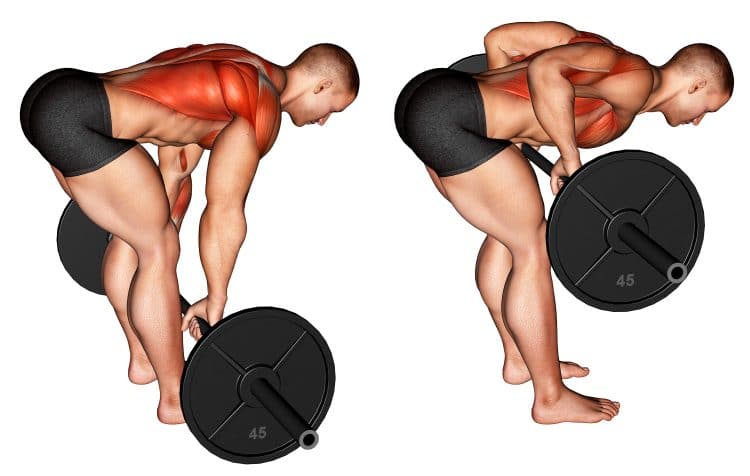
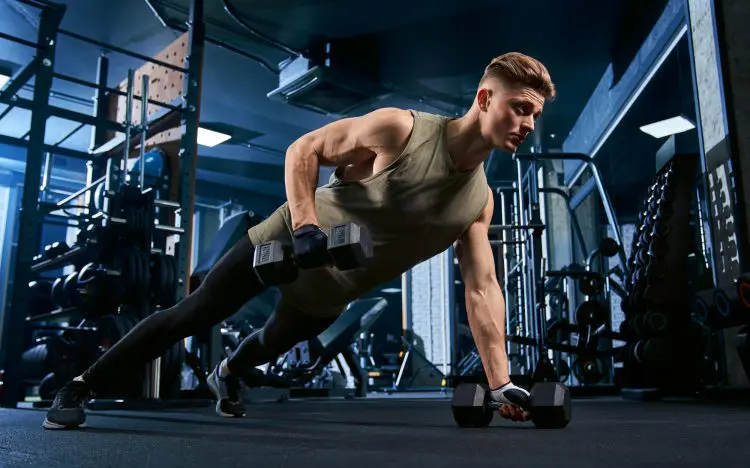
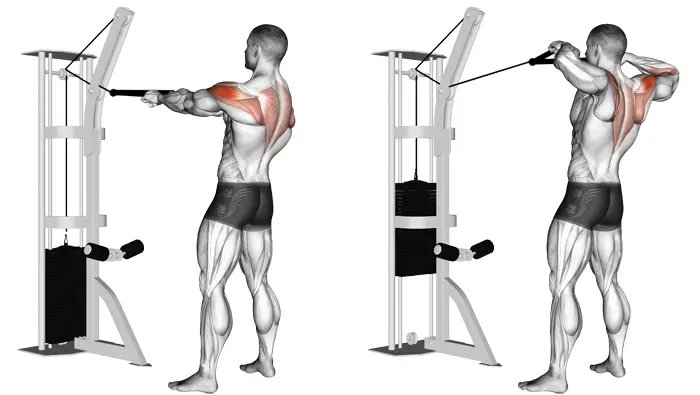
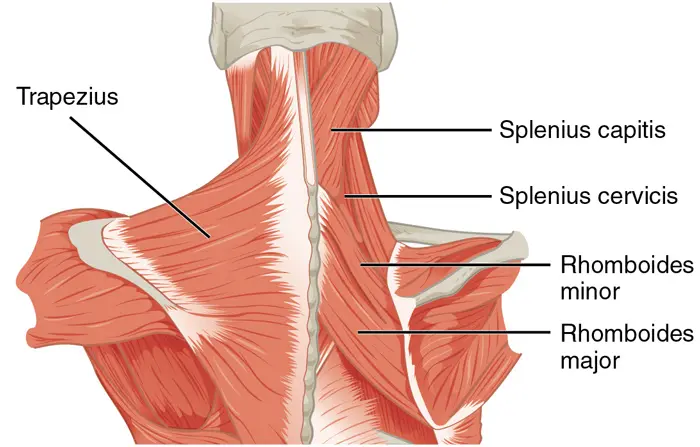


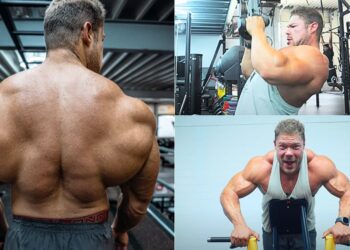
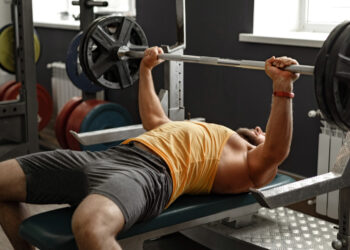

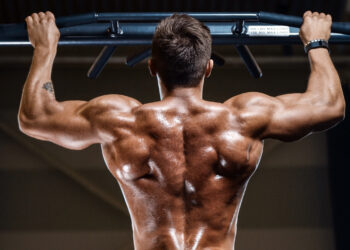


This is a really great article! Thank you!
Just wanted to say that for me (an “advanced noob” or “novice intermediate” xD) once a week did cut it.
Don’t the studies show that as long as enough volume (at least 10 working sets) and intensity (1-3 reps in reserve, as pointed out in the article) are reached, noticable hypertrophy will happen?
Hey Edoardo, thanks, man!
10-20 sets per week seems to be the sweet spot volume-wise but other studies suggest as few as 6 sets will work, too. I think you need to experiment to find out what works best for you. Same re. frequency, which can range from 1-6 times per week.
The key is to find how few sets you need to achieve your goals, and not how many you can tolerate. Also, volume is a moving target, and some weeks you’ll be able to deal with more than others, and your ability to deal with that volume also improves as you adapt to your workouts.
So, no definitive answers, but some useful guidelines to explore.
Good luck!